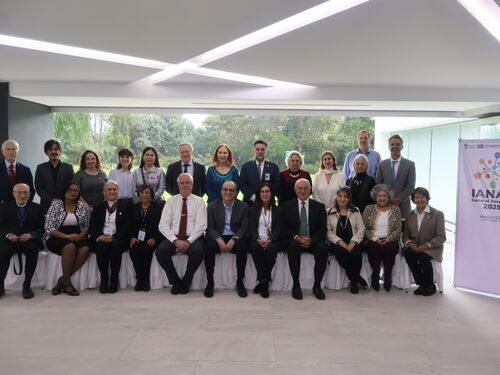The Challenge of Maintaining and Reopening Buildings During a Pandemic
Feature Story
Last update August 28, 2020
The COVID-19 pandemic has forced many businesses and government agencies to close or restructure to allow their employees to work remotely. However, the now-empty facilities still require some maintenance and engineering staff to remain on-site to ensure the basic operations of the buildings are running smoothly and safely. Keeping these employees safe during the pandemic so they can continue their essential duties is a priority.
“The pandemic is still ongoing, so simply because we’ve reopened doesn’t mean the risk is now gone,” said Corey Boles, senior health scientist with Cardno ChemRisk, and co-host of a Federal Facilities Council webinar on Aug. 19 that explored how to protect building engineering and maintenance staff from COVID-19.
Safety of Maintenance Staff
For facilities that require on-site engineering and maintenance staff, certain practices can be put in place to reduce the risk of infection, with varying degrees of efficacy, said Boles. Updating ventilation systems in a facility, for example, would be a more effective way to protect staff than only requiring them to wear personal protective equipment (PPE) while on-site. Ideally, both measures would be used to create the safest-possible environment, he added.
The general public health guidelines that medical and scientific authorities have stressed for months apply to engineering and maintenance staff during the pandemic. Physically distancing at least 6 feet from one another, wearing face coverings and other PPE, washing and sanitizing one’s hands, and covering one’s mouth and nose when coughing and sneezing are all general practices that are important for these workers to follow. Infectious diseases pose a unique health hazard, said Boles, in that much of the safety of others depends on individuals following these public health guidelines — in contrast to chemical or mechanical hazards, which do not have such a significant human factor.
“Everybody has a role to play,” said Boles. “Everybody has a responsibility. So, really encouraging compliance is important.”
Different administrative and logistical measures can also be taken to minimize the risk to maintenance staff. For example, understanding the different areas of a facility and which types of employees go there and overlap with one another can be helpful to minimize staff movement and interactions, Boles said. Staggered employee schedules have also proved to be effective in limiting the number of employees in a facility at any one time.
Reopening Facilities
Prior to reopening facilities, employees and managers should inspect the workplace for any concerns that may have arisen as a result of the buildings being dormant for an extended period of time. Issues such as waste buildup, pests, Legionella and other waterborne bacteria, mold, and water and structural damage to buildings often occur during periods of reduced activity, said David Krause, founder of Healthcare Consulting and Contracting (HC3) and co-host of the webinar.
“Evaluating this before [reopening] is critical,” added Krause. “Unfortunately, we are expecting a greater number of [Legionella] outbreaks associated with COVID.”
Reopening plans are only one part of the overall infection control strategy and should work in concert with other plans, including developing a clear communication framework. Unified communication throughout the organization is vital in a situation such as a pandemic, said Boles. Leadership can effectively update the staff on new infection control measures and can continue to encourage compliance with existing guidelines. As the scientific consensus surrounding the COVID-19 pandemic changes and grows, clear communication to all members of an organization will put it in the best position to reduce the risk of spreading the virus.
Watch a full recording of the webinar here. The Federal Facilities Council, a cooperative association of federal agencies organized by the National Academies’ Board on Infrastructure and the Constructed Environment, identifies and advances technologies, processes, and management practices that improve federal facilities throughout their life cycle.
Register for the next FFC webinar taking place Sept. 10, which will discuss workplace changes in response to COVID-19.



